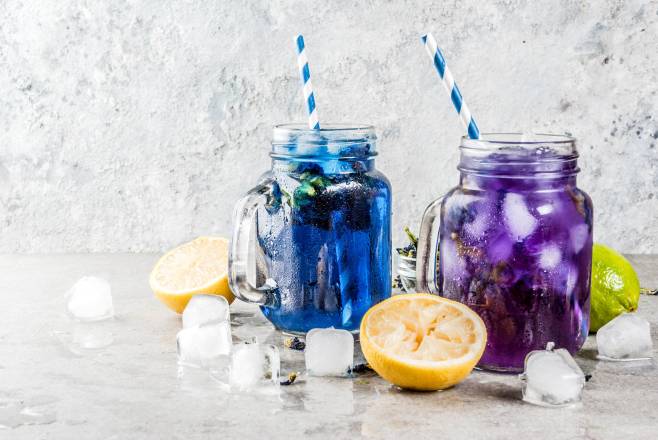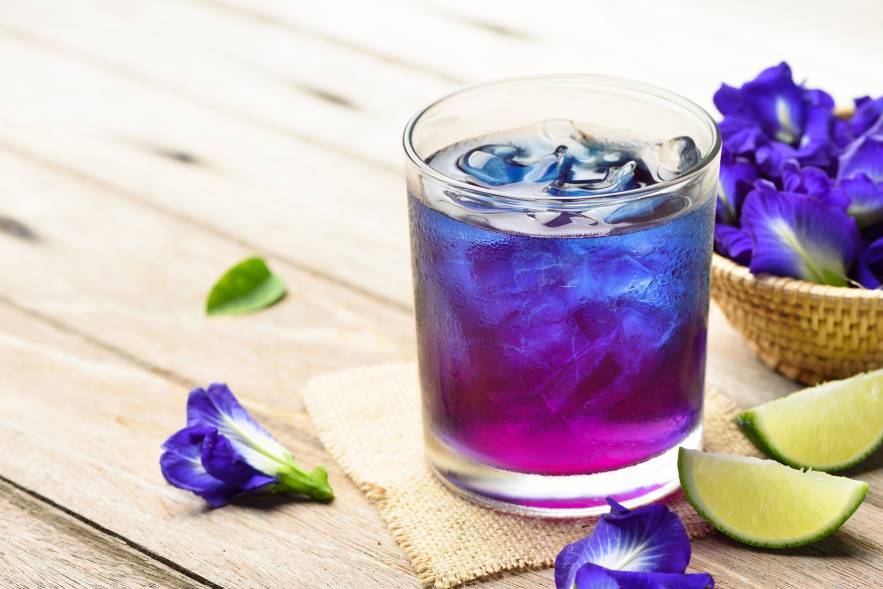Butterfly pea tea is a type of tea that is made from the dried flowers of the butterfly pea plant. This tea has a sweet, floral taste that is often enjoyed by those who enjoy tea. This plant is native to Southeast Asia, and is used to make a variety of different teas.
It is used for tea because of its high levels of antioxidants and other nutrients. This plant also contains a type of compound that is known to have anti-inflammatory properties. Butterfly pea tea is popular because it is caffeine-free, and is often used as an alternative to other types of tea.
Butterfly pea tea is good to consume. It allows the drinkers to get the benefits of tea, while also avoiding some of the negative effects that come with caffeine consumption.
What is a butterfly pea flower?
It is widely grown on small islands in Southeast Asia, and is very good as a tea. It is very sweet and very light, and tastes like chamomile. It is very popular because of its beautiful color; it has lots of health benefits; and it gives cocktails a nice color boost!
If you combine it with a little water, it will become a lovely tea. Just put a little bit of fresh lemon in it, and the color will change from blue to purple. Some people like to add ginger, cinnamon, or even a little bit of baking soda for a little bit of extra flavor.
It is very easy to prepare deliciously-flavored tea from the tea flowers that are cultivated in Southeast Asia. It is a wonderful ingredient in some different types of tea blends.
How do you make tea from the flowers of butterflies?
If you want to make a perfect cup of tea from this tea, you should use one heaped teaspoon of flowers per cup of water. This measurement is an estimate and doesn’t include sugar, so use whatever you want to add!
It’s easy to prepare Butterfly Pea Flower Herbal Tea by boiling water and putting flowers in it, and after you steep the flowers in the water for several minutes, the color of the tea will darken. The more time you let this loose tea sit, the more it will become clear.
When you are done steeping the Butterfly Pea Flower Herbal Tea, it will be a thick blue color. If you want to color the brewed tea violet, you could squeeze some lime or lemon juice on it.
To create Nam Dok Anchan with fresh lemon or lime juice, add some sugar or any sweet ingredients and a splash of orange or grapefruit juice to the brew. Butterfly Flower Herbal Tea is delicious hot or chilled, and is great for cocktails and mocktails.
What does butterfly pea tea taste like?

Butterfly pea tea is often enjoyed for its sweet, floral taste. Some people describe the taste as being similar to that of jasmine tea, although it may also have a slightly different flavor.
This tea is caffeine-free, which makes it an ideal option for those who want to avoid caffeine. Some people also find that butterfly pea tea has a relaxing effect on the body.
Butterfly pea tea does have a slightly different flavor than other types of tea, which may lead some people to believe that it does not smell like flowers. However, many people who enjoy this tea describe the smell of the flowers as being strong and sweet.
The floral scent may be intensified when the tea is brewed for a longer period of time. People who enjoy butterfly pea tea often find that it is a refreshing option that can help to reduce stress levels.
This tea is also beneficial for those who are looking for an alternative to other types of tea. Aside from its good taste and smell, butterfly pea tea is also high in antioxidants and other nutrients. This makes it a good choice for those who want to improve their overall health.
How to make butterfly pea tea?
Use roughly 5-7 dried flowers for every cup of water. Make the blue tea with fresh spring water, if possible. The water should be boiled and allowed to cool to about 205°F. You must heat your teapot, which you can do by sprinkling hot water inside and outside of it.
Steep for about five minutes after adding the blue blossoms. Make sure not to steepen too much. While the tea is less prone to become bitter than green tea, the pleasant flavor may alter or lessen.
Now you may strain and include sweeteners. Allow the blue tea to cool before adding ice cubes to serve it chilled. You can add more ingredients, like a few drops of lemon, to intensify the color purple.
Lime, which has a delicate citrus flavor, brings out the best in blue tea. Start with a few drops of lime and add more until the color you want is achieved. Additionally, practically any teapot can be used to create blue tea. The flowers can be steeped and removed using a spoon if you don’t have a teapot or strainer.
What are the health benefits of butterfly pea tea?
The antioxidant qualities of blue tea and butterfly pea tea are among its many advantages. Antioxidant-rich foods are essential for health because they combat free radicals, which are the main cause of the body aging prematurely.
Due to its ability to control blood sugar levels, this tea is fantastic for diabetic individuals. Between-meal consumption of a cup of blue butterfly tea can help control blood sugar levels.
Since ancient times, butterfly pea has been used to lessen stress and anxiety. You’ll feel calmer and sleep better if you consume blue tea. Additionally, it enhances memory and brain function.
Flavonoids are present in the butterfly pea’s rich indigo blossoms. Flavonoids are potent antioxidants with anti-inflammatory and immune-system-boosting characteristics that are present in practically all fruits and vegetables.
Additionally, it has proanthocyanidin, an antioxidant that improves blood flow to the eye capillaries and is effective in treating conditions like glaucoma, blurred vision, retinal degeneration, and weary eyes.


